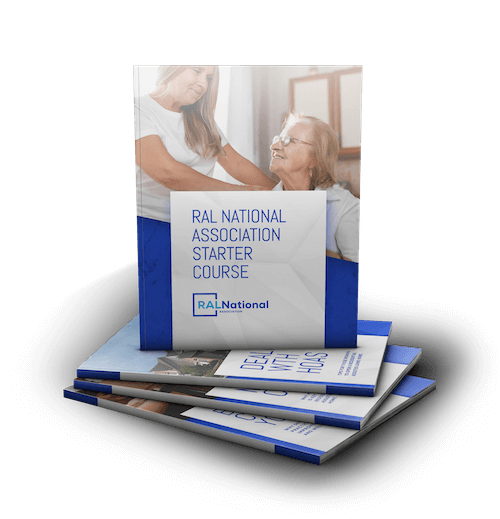Medication disposal is often a challenge for families. Notwithstanding environmental effects, medication that is not used becomes a cumbersome storage problem in medication cabinets throughout the United States.
- What to do with unused medication?
- What if the doctor changes a dose of your medication and the previous dose is not exhausted?
- Can it be thrown in the trash or flushed down the toilet?
- What about discarding unused medication in the drain of a sink?
Medication disposal is not a one-size-fits-all solution. From one state to another, different laws, regulations, and policies dictate the appropriate disposal of medication.
From one state to another, different laws, regulations, and policies dictate the appropriate disposal of medication. However, there is some basic information applicable regardless of locale that you should consider.
HOW TO SAFELY DISPOSE OF UNUSED OR EXPIRED MEDICINE
Medical facilities including senior living communities should have pharmaceutical safes they can use to store several types of drugs. When it’s time to get rid of the unused drugs, safely disposing of medication should be a top priority for assisted living homes. Over 90% of residents in assisted living homes take medication on a daily basis.
More than 50% of residents are active poly-pharmacy participants. The potential for unused medication to emerge in assisted living homes is not a chance, but a reality.
Therefore, there are some reasonable measures assisted living homes can take to ensure they are operating optimally in regards to medication disposal.
- One of the optimal ways to dispose of most medication is simply to return it to the pharmacy that filled it. Pharmacies in states throughout the nation are obligated to receive unused medicine, as they have the proper equipment and systems in place to dispose of medication.
- Visit the Food & Drug Administration’s website for specific instructions pertaining to many drugs. The Food & Drug Administration regularly updates:
- Flush List: medication that can be flushed in the commode.
- Non-flush List: medication that is dangerous for the environment and should never be put into the water supply.
- Trash List: medications that can be safely discarded in the trash.
- Needles and syringes must be discarded appropriately in needle containers and those containers are available through multiple outlets and should be bountiful in assisted living homes. Here are the Austin Local Events To Check In November in case you are thinking of disposing your trash during that time as it is a very busy time.
UNDERSTANDING NEW REGULATIONS IN SENIOR LIVING
As so many things are with senior living, new regulations are often targeted at Skilled Nursing Facilities. However, senior living facilities often retrofit these regulations in order to ensure safety and well-being within the home. While some states are making concerted efforts to provide guidance for assisted living homes, Skilled Nursing Facilities face far greater restrictions because of the serious medical attention required by their residents.
Recently, changes in regulations have driven assisted living homeowners to take medication disposal more seriously. Federal regulatory agencies have begun to put regulations in place that make medication disposal a process to be reconsidered.
The Environmental Protection Agency, Drug Enforcement Administration, and the Food & Drug Administration have put regulations in place that also have penalties attached for noncompliance. While some of these policies are debated in certain states, awareness is key. Be sure to know what these federal regulatory agencies require and how best to implement them in your homes.
Applying these policies to assisted living homes can be quite an undertaking. Confusion exists as it pertains to policies that the above agencies advocate and what makes sense in the assisted living home setting. For instance:
- The DEAs Disposal of Controlled Substances 2014 Final Rule
- long-term care facilities (LTCFs) were permitted to dispose of a current or former resident’s pharmaceutical controlled and non-controlled substances in authorized on-site receptacles. That rule also stated that flushing would not meet the agency’s “non-retrievable” standard for destruction of controlled substances.
- The EPAs Management Standards for Hazardous Waste Pharmaceuticals and Amendment to the PO75 Listing for Nicotine effective August 2019
- Under the EPA rule, a long-term care facility means a licensed entity that provides assistance with activities of daily living, including managing and administering pharmaceuticals to one or more individuals at the facility. This definition includes, but is not limited to, hospice facilities, nursing facilities, skilled nursing facilities, and the nursing and skilled nursing care portions of continuing care retirement communities. Not included within the scope of this definition are group homes, independent living communities, assisted living facilities, and the independent and assisted living portions of continuing care retirement communities.
While regulations and to whom those regulations apply are tricky for assisted living homes, there are some considerations senior living homes should apply when disposing of medication.
- Destroy unused meds, but do not flush them down the drain.
- Align as best as possible with federal, state, and local rules and regulations.
- Ensure compliance with staff that satisfactorily reduces risk to the home.
- Make environmentally sound practices for your home.
OTHER INFORMATION TO CONSIDER
Assisted living homes should strive to meet the highest compliance standards for medication removal.
Federal, State, and Local agencies may often provide guidance that conflicts; yet, it behooves assisted living homeowners to strive for the highest standard that also aligns with the home and its operational procedures.
Assisted living homes are businesses and the cost associated with medication disposal should certainly be considered.
The costs may be direct or indirect, but they are costs nonetheless. For instance:
- Nursing time associated with medication management and blister packing.
- Nursing care taken from resident care to manage medication disposal and recording
- Carbon based disposable pouches (pouches and 3rd party removal)
Assisted living homeowners should be cognizant of the consequences of poor medication disposal.
- Increased burden on the staff
- Profit margin reduction
- Damage to the natural environment
- The danger of addictive or dangerous substances falling into the wrong hands
While the issue of medication disposal is a moving target, assisted living homeowners can operate efficiently as long as internal policies comply reasonably with federal, state, and local regulations.
This is not always an easy feat, however, it is one that must be addressed.
Therefore, recognize what is and is not appropriate by seeking support from RALNA.
Residential Assisted Living National Association supports assisted living homeowners nationwide with blogs, newsletters, legal support, discount purchasing, and so much more – join today.
Contact us today for support and advice pertaining to growing issues.











